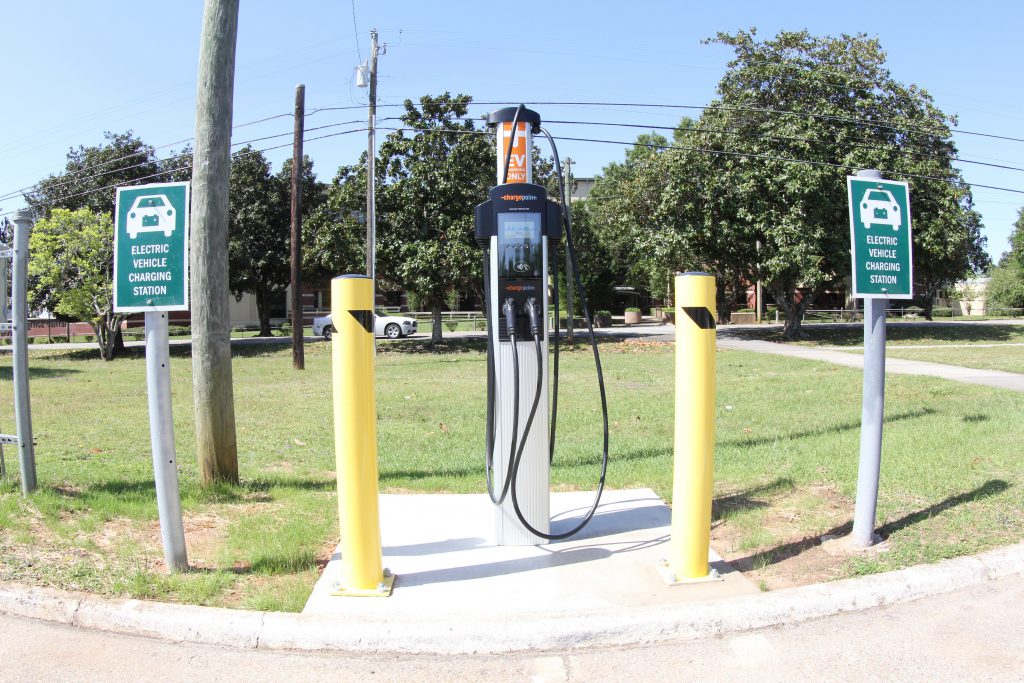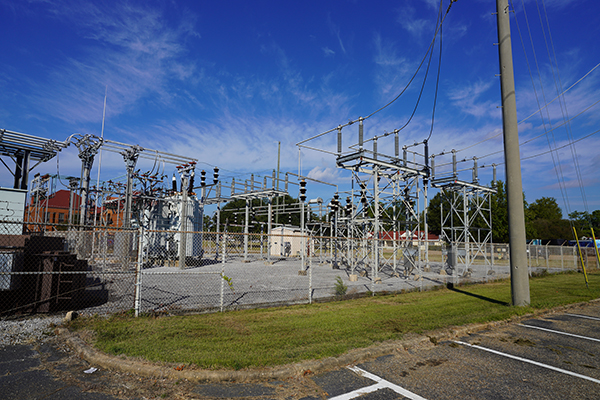By Charlotte Frei, Ph.D., P.E., and Megan Czach, P.E.
Through the Infrastructure Investment & Jobs Act, the federal government is making significant investments in efforts to promote sustainable and energy efficient transportation—funding programs, in particular, through the Department of Energy and Department of Transportation to states and municipalities.
A leading area of interest for state and local governments as well as other community organizations taking advantage of these opportunities is electric vehicles (EVs). Equally as important as a funding stream, however, is ensuring they have the resources available to effectively plan, design, and install charging stations. Work at several sites suggests that following a few core concepts, and answering some key questions, can help owners plan and construct EV systems in a smart, adaptive manner.

EVALUATING LOCATIONS
Where is demand for EV charging? How long will different users need to stay at a station? Estimating customer demand based on current travel patterns can help determine where to place stations, what kind of stations to install (Level 2 or Level 3), and what kind of charging policies to put in place. For example, there may be locations where charging is free but limited to two hours, or places where charging is limited to four hours and available for a fee. Consider the different user needs in estimating demand, including private fleets, the general public, and tourists.
There are ample data sources available to understand demand and the quality of customer experience. Cell phone data can indicate where foot traffic is and how long customers dwell at different destinations. Employers or local tourism bureaus may have more information on employee and visitor behavior that can be useful in understanding unmet needs.
Write procurement rules and contracts that require industry standards and data-sharing, such as the Open Charge Point Protocol (OCPP). To stay informed as infrastructure owners and operators, station installation and maintenance should be subject to performance measures such as 98 percent “uptime” and a maximum response time to repair down stations. The OCPP standard is how stations communicate usage information to a central server, where owners and operators can understand usage patterns. Open data standards are the foundation for insights into individual mobility behaviors, systemic patterns, and network operations. OCPP allows station operators and owners to access data on usage and allows them to communicate with customers and analyze operations.
Using OCPP also can enhance the customer experience by allowing a reservation application to consume data from all stations in a network, regardless of the brand or owner.
FOLLOWING GUIDELINES
Engineering standards and best practices should be considered in planning for the deployment of EV chargers. When adding stations in a parking lot, install chargers in a minimum of 10 percent of the spots. With each unit, install both power conduits and communication conduits, and use hard wired communications and not Wi-Fi where possible to make sure there is less of a chance of signal interference. In addition, place the EV charging system on its own distribution equipment. By placing the EV chargers on their own power utility meter, separate from the meter for the business or building, an operator would be able to track electricity separately. This provides flexibility to price for EV charging or partner with a third-party provider of charging services.
It is recommended that a 480-volt service is provided, which is required for DC Fast Charging Stations. For Level 2 chargers, a step-down transformer to either a 208-volt or a 240-volt panel would need to be provided. Since Level 2 chargers are available at either voltage, the operator could standardize the voltage of chargers to be deployed to match existing voltage systems currently in place at prospective locations. Coordination with the power utility is required to determine if there is sufficient capacity at the EV charging location. The number of chargers to be installed must first be determined to finalize the additional loads that will need to be added.
Site Considerations. Additional site conditions should be considered in addition to electrical standards. This includes the necessary signage to direct travelers to charging locations. It also means existing lighting systems may need to be evaluated to determine if additional lighting is required. Charging spaces should be painted to indicate it is for EV charging only.
Bollards, vehicle stops, or guardrails can be used to prevent customers from parking too close to the station or hitting it. These also provide some separation for hanging charging cables. A charging space may need to be longer than a typical parking space to accommodate the station and allow safe separation for a vehicle.
LONG-TERM PLANNING
As a public or private charging operation grows, owners need to plan for repair and replacement costs. New infrastructure also may be required onsite to support EV chargers. For instance, can your stepdown transformers or existing panels handle the additional load? What rate does the owner/operator need to institute to ensure the power, maintenance, and replacement costs of the unit are covered over an anticipated seven- to 10-year lifecycle? Through scenario planning and sensitivity analysis, we can estimate the likely range of costs to budget dollars appropriately. Actual expenses can be tracked regularly against planned expenses to understand where operating or maintenance costs are exceeding expectations.
Funding Sustainment. Maintenance and operations of charging stations can be funded through user fees, although generally these programs require up to a 20 percent local match. Depending on the community, lower federal match requirements may apply. A few federal programs to consider are the Volkswagen Settlement Funds, National Electric Vehicle Infrastructure Program, and two discretionary grant programs: Rebuilding American Infrastructure with Sustainability and Equity; and Strengthening Mobility & Revolutionizing Transportation. States also may have additional sustainability, resilience, or energy programs that support EV station installation.
INTEGRATING IMPROVEMENTS
Charging stations should not be thought of as one-off investments. Install EV supply equipment in conjunction with other sustainability or multimodal transportation improvements. Users may need to leave their vehicle for anywhere from 30 minutes to several hours, so people may want to run errands or enjoy downtime while they charge. Once someone parks their vehicle, can they walk, bike, or take a bus to community establishments? Mobility hubs are places where people can transfer among modes such as walking, biking, transit, driving, or carpool/drop-off. Consider whether the site could use mobility hubs to facilitate better circulation and mode support, and how charging stations can play a role in mobility while supporting user needs.
What land uses surround the locations where you plan to install stations? Level 3 charging stations generally cost between $80,000 to $150,000 to purchase and install, and require users no more than 30 minutes to 45 minutes of dwell time to fully charge a depleted battery. Level 3 stations can be located effectively to maximize both access and usage. Also consider how stations can recover some of their cost through long-term enterprise-wide energy reduction, such as fleet conversion from gas to EV.
More News from TME
-

Electrifying Solutions for Military Installations
As military installations implement electrification measures into the future, the challenges they face will not just require innovative technology solutions but embracing a holistic delivery approach implemented early in projects. -

Providing Benefits Through Adaptive Reuse of Federal Assets
Reconfiguring existing sites or buildings for a new mission has many inherent advantages to solve challenges that face federal entities, but key considerations need to be accounted for in order to maximize value. -

Driving Resilience Decisions Through Better Data
The Air Force Office of Energy Assurance is demonstrating how a new iteration of resilience assessments can better target and quantify potential vulnerabilities in energy security—bolstering national defense by supporting more informed decisions on resilience improvements at installations.